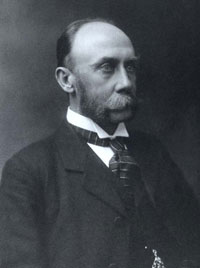10 Appointment of Deputy President
The Deputy President and Chairman of Committees shall be appointed in a similar manner to the President.
Amendment history
Adopted: 19 August 1903 as SO 27
Amended:
- 22 October 1981, J. 589–90 (change of title of office)
- 6 May 1993, J. 96 (removal of hyphen)
1989 revision: Old SO 27 renumbered as SO 10
Commentary

Extract from the Journals of the Senate, 25 November 1908, showing President Gould's ruling on how a tied vote for Chairman of Committees should be determined,
With the major debate on the method of selection of the presiding officers having taken place in relation to the first election for President in 1901, this standing order raised no new issues and was agreed to without amendment or debate on 10 June 1903, pending final adoption of the standing orders as a whole on 19 August that year.[1]
Changes have been minimal but the 1938 MS notes that the standing order had not been strictly followed. The usual method was for the Leader of the Government in the Senate to propose the nomination of a senator as Chairman of Committees by way of notice of motion, based on party room selection of a candidate beforehand.
The motion is then passed in the ordinary way and nothing further happens until the time comes for the Chairman to take the Chair of the Committee, which he does without ceremony.

Senator Lieutenant Colonel John Gould (Anti-Socialist, NSW), President of the Senate 1907–1910 (Source: Commonwealth Parliamentary Handbook)
At the first use of the procedure in 1904, Senator McGregor (ALP, SA) gave notice of a motion proposing the appointment of Senator Higgs (ALP, Qld). Senator Dobson (Tariff Reform, Tas) gave a contingent notice of motion (contingent on Senator McGregor’s motion being moved) for the appointment of Senator Best (Prot, Vic).[2] There was some confusion when President Baker declared that a ballot would take place, with Senator Clemons (FT, Tas) questioning how a ballot could be held for an ordinary motion.[3] Baker ruled that a ballot was necessary where there were two or more candidates and Higgs won the vote. The 1908 election of Chairman of Committees was the first occasion when the ballots were tied (twice) and President Gould ruled that the matter should be determined by lot in accordance with the procedure for electing a President.[4] Section 23 of the Constitution, providing for equally divided votes to be resolved in the negative, did not apply to a ballot.
In other early variations on the method, Senator Plain (Nat, Vic) was appointed in 1926 pursuant to a motion moved by leave rather than on notice.[5]
The potential difficulties arising if the standing order is not strictly followed are avoided by the current practice of choosing a Deputy President in exactly the same way as a President is chosen (see SO 6).